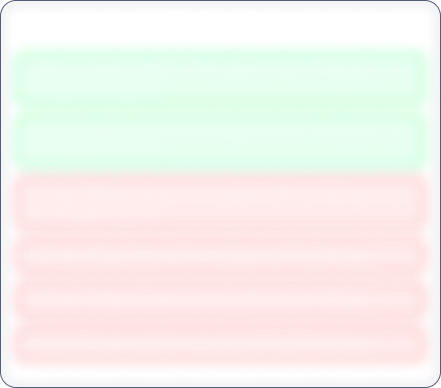Year End Sale 50% off
Brand Concepts

No Data Available
Investor Sentiment
Brand Concepts Share price and Fundamental Analysis
Key Metrics
Included In
Stock Returns
Stock Heatmap

No Stocks
Smart Score

Unlock Smart Score
See Detailed Analysis & Insights


Unlock Insights
See Detailed Analysis & Insights
Technicals
Returns Calculator
If you would have investedResearch Report
No Research Report
Corporate Action
Financials
Key Ratios
ROE
Avg ROE (3 Yrs) : NaN%
ROCE
Avg ROCE (3 Yrs) : NaN%
ROA
Avg ROA (3 Yrs) : NaN%
NPM
Avg NPM (3 Yrs) : NaN%
Dividend History
5 Year FactSheet
Documents

No Data Available
News
Brand Concepts Management and History
Company Management


Unlock Management Data
See Detailed Analysis & Insights
Company History
Brand Concepts Limited was incorporated as a private limited company with the name 'Brand Concepts Private Limited' on 4th October, 2007. Subsequently, The Company was converted into public limited company and the name of the Company was changed to 'Brand Concepts Limited' on 8th December, 2017.
Mr. Ganesh Dhoot, Mr. Arpit Dhoot, Ms. Kalpana Sharma and Mr. Rakesh Singhwi incorporated Brand Concepts Private Limited in the year 2007. In the year 2010, the promoter Mr. Pradeep Maheshwari took over the Company from Dhoot Family with an aim of developing licensed fashion and lifestyle brands in Bags, Travel Gears & Accessories for the Indian Market. Later in year 2010 M/s. Pradeep Maheshwari HUF and IFF Overseas Pvt. Ltd. Were added as promoters.
Brand Concepts is a premier resource for licensed fashion and lifestyle brands in category - travel gears, bags and accessories. The Company's well-rounded portfolio and expansive product offering establish it as the go-to resource for travel gears, bags and accessories across all channels of distribution. The Company is a leader in product design, quality and knowledge of the product based on its lengthy experience. The company prides itself on making great products at a great price, and rises to the challenge of helping retailers meet their margins. The Company is dedicated to developing brands and products for their Customers and Consumers that create more enriched lives.
Within Brand Concepts portfolio are some of the international and domestic top travel gears, bags and accessories licenses, which the licensee brings to life through its creativity, fashion intelligence and deep research to establish the DNA of the license, which shines in the company's licensed character segment of the business. The Company represents a wide mix of International and domestic brands, including but not limited to Tommy Hilfiger, HEAD, AND and Global Desi. The Company has exclusive franchise of Tommy Hilfiger and Trademark licenses of HEAD, AND and Global Desi. In addition to the licensed brands it has also launched two of own brands i.e. Sugarush (ladies hand bags) and The Vertical (backpacks).
Brand Concepts Share Price
Brand Concepts share price reflects investor sentiment toward the company and is impacted by various factors such as financial performance, market trends, and economic conditions. Share price is an indicator which shows the current value of the company's shares at which buyers or sellers can transact.
Brand Concepts Market Cap
Market capitalization of Brand Concepts indicates the total value of its outstanding shares. Marketcap is calculated by multiplying share price and outstanding shares of the company. It is a helpful metric for assessing the company's size and market Valuation. It also helps investors understand how Brand Concepts is valued compared to its competitors.
Brand Concepts PE Ratio
Brand Concepts PE ratio helps investors understand what is the market value of each stock compared to Brand Concepts 's earnings. A PE ratio higher than the average industry PE could indicate an overvaluation of the stock, whereas a lower PE compared to the average industry PE could indicate an undervaluation.
Brand Concepts PEG Ratio
The PEG ratio of Brand Concepts evaluates its PE ratio in relation to its growth rate. A PEG ratio of 1 indicates a fair value, a PEG ratio of less than 1 indicates undervaluation, and a PEG ratio of more than 1 indicates overvaluation.
Brand Concepts ROE (Return on Equity)
Return on Equity (ROE) measures how effectively Brand Concepts generates profit from shareholders' equity. A higher ROE of more than 20% indicates better financial performance in terms of profitability.
Brand Concepts ROCE (Return on Capital Employed)
Return on Capital Employed (ROCE) evaluates the profitability of Brand Concepts in relation to its capital employed. In simple terms, ROCE provides insight to investors as to how well the company is utilizing the capital deployed. A high ROCE of more than 20% shows that the business is making profitable use of its capital.
Brand Concepts Total Debt
Total debt of Brand Concepts shows how much the company owes to either banks or individual creditors. In simple terms, this is the amount the company has to repay. Total debt can be a very useful metric to show the financial health of the company. Total debt more than equity is considered to be a bad sign.
Brand Concepts Debt to Equity Ratio
The Debt-to-Equity (DE) ratio of Brand Concepts compares its total debt to shareholders' equity. A higher Debt to Equity ratio could indicate higher financial risk, while a lower ratio suggests that the company is managing its debt efficiently.
Brand Concepts CAGR (Compound Annual Growth Rate)
CAGR shows the consistent growth rate of Brand Concepts over a specific period, whether it is over a month, a year, or 10 years. It is a key metric to evaluate the company’s long-term growth potential. Main metrics for which CAGR is calculated are net sales, net profit, operating profit, and stock returns.
Brand Concepts Technical Analysis
Technical analysis of Brand Concepts helps investors get an insight into when they can enter or exit the stock. Key components of Brand Concepts Technical Analysis include:
Support Levels (S1, S2, S3)
There are usually multiple support levels, but the main support levels for a stock are S1, S2, S3. Support levels indicate price points where stock might get support from buyers, helping the stock stop falling and rise.
Resistance Levels (R1, R2, R3)
There are usually multiple resistance levels, but the main resistance levels for a stock are R1, R2, R3. Resistance levels represent price points where Brand Concepts shares often struggle to rise above due to selling pressure.
Brand Concepts Dividends
Dividends refer to the portion of the company’s profits distributed to its shareholders. Dividends are typically paid out in cash and reflect Brand Concepts ’s financial health and profitability.
Brand Concepts Bonus Shares
Bonus shares are usually given by companies to make the stock more affordable, increase liquidity, boost investor confidence, and more.
Brand Concepts Stock Split
Stock split increases the number of its outstanding shares by dividing each existing share into multiple shares. When the company offers a stock split, the face value of the stock reduces in the same proportion as the split ratio.
Brand Concepts Financials
The financials of Brand Concepts provide a complete view to investors about its net sales, net profit, operating profits, expenses, and overall financial health. Investors can analyze financial data to assess the company’s stability and also understand how the company has been growing financially.
Brand Concepts Profit and Loss Statements
The profit and loss statement of Brand Concepts highlights its net sales, net profit, total expenditure, and operating profits in the current financial year. This Profit and Loss statement is crucial for evaluating the profitability and financial stability of Brand Concepts .
Brand Concepts Balance Sheet
The balance sheet presents a snapshot of Brand Concepts ’s assets, liabilities, and equity of shareholders, providing insights into the financials of the company.
Brand Concepts Cashflow Statements
Cashflow statements track the company's cash inflows and outflows over a period. It is an essential tool for understanding how well the company manages its liquidity and finances.


